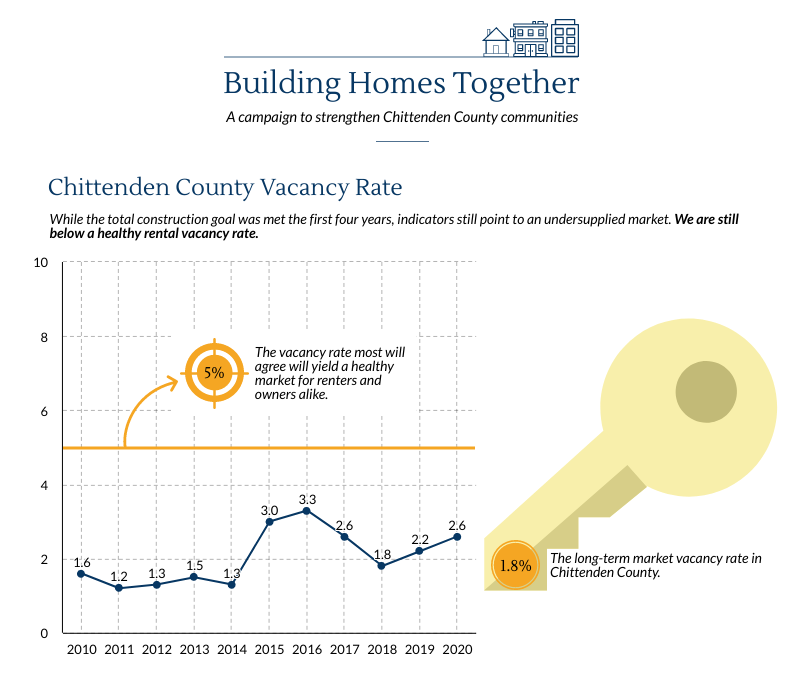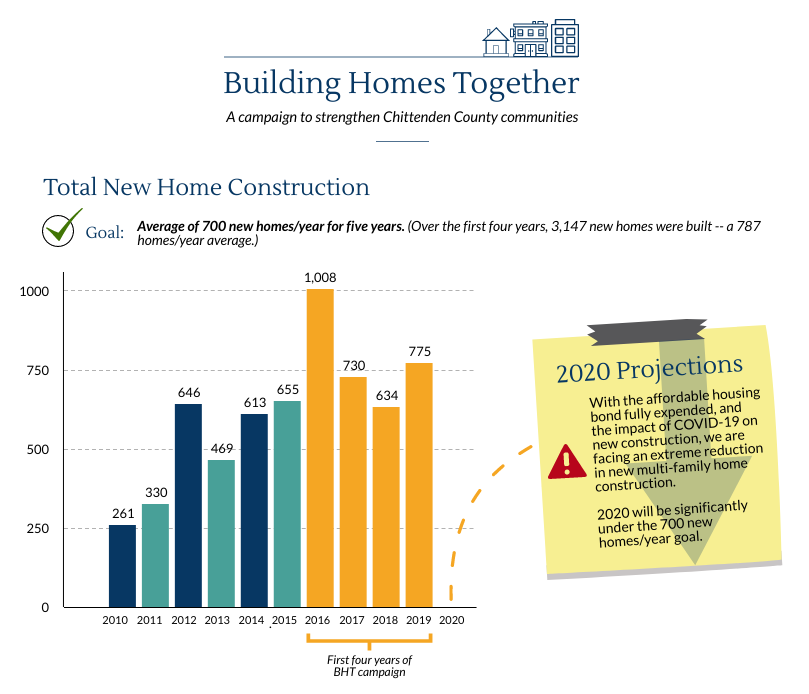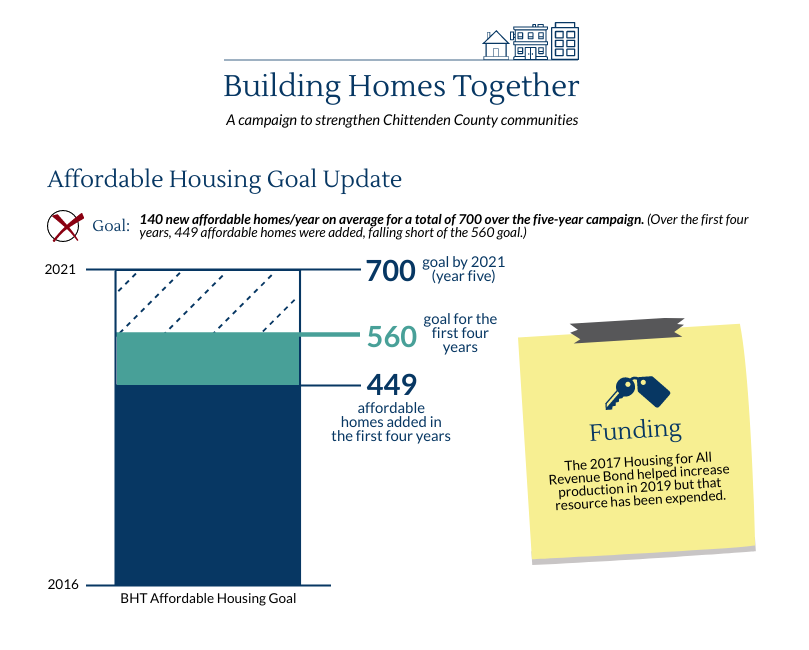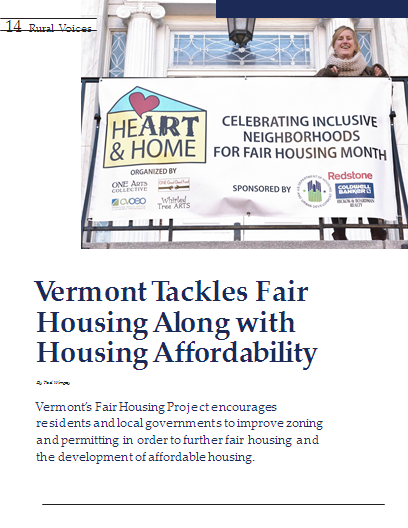This is part of a series of commentaries by CVOEO and Vermont Legal Aid in support of Just Cause Eviction policy. The series includes:
By Housing Navigator Ryan Murphy and Director Sandrine Kibuey, Housing Advocacy Programs, CVOEO
Thousands of Vermont renters live day-to-day, in precarious housing, uncertain of how they will be able to make ends meet and afford the rent, buy food, or put gas in their car to get to work. It is a constant struggle and COVID-19 has deepened the impact of these daily struggles. The state and federal eviction moratoriums have provided temporary relief to many tenants, but the fear of being evicted is nonetheless real. And on top of it all, the question about why and when is also a great source of stress as a “no cause” eviction is a possibility for all tenants living in Vermont.
Vermont housing law allows landlords to evict any tenant for any reason with as little as 90 days’ notice and no-cause eviction is particularly worrisome for families, older Vermonters, as well as people of color. For many, this experience has been one of extreme consequences; here are a few examples.
Maintenance complaints and retaliation
Jeffrey and his partner, Abigail, received a no-cause lease termination notice this winter after almost a decade in the same home. He was not totally happy with the apartment as the heat had been cutting out, the wooden floors splintered his kids’ feet, and the driveway iced over so badly that he had once fallen and broken his leg.
Jeffrey had verbally complained to the landlord about these issues many times and he even had a few records of his complaints in his email outbox and ‘sent’ text messages. His landlord lived down the block, and Jeffrey felt that hand-delivering a letter, or sending one via certified delivery, might come off as petty and antagonizing but finally decided to send one.
It was hard not to feel like the eviction notice had come as retaliation for frequent repair requests. In Vermont, landlords are prohibited from practicing this kind of retaliation, but there is no mechanism to stop them from delivering no-cause termination notices. If the landlord’s case against Jeffrey went to court, Jeffrey might stand a chance of winning. Because of COVID, though, eviction cases are “stayed.” Technically, Jeffrey and his family could stay in the apartment until the end of the moratorium, but then they could risk getting an eviction for cause as holdover tenants and ruin their housing history for a long time.
It was clear to Jeffrey and Abigail that they needed to line up a new place to live. After weeks of scouring the internet for available, affordable apartments around Burlington, they made the difficult decision to put down a deposit on a place in a neighboring state. They did not see the benefit of engaging in a big fight to stay in a home that would still need many repairs and a landlord resenting them, refusing to address these habitability issues.
From stability to eviction
On the last day of 2020, John’s family received a no-cause lease termination notice. It was yet another difficulty in a challenging year. John imagined trying to explain his current situation to the person he’d been only 12 months ago.
In March, John had been furloughed from his lucrative job as a contractor, and then he had been let go entirely. His job had been the family’s sole source of income. John had always made enough money to take care of himself, his wife, and his kids. Despite his job loss, he was grateful that he had enough in his financial safety net to keep current on rent for a couple of months until the pandemic ended.
A couple of months turned into a few, so John and Michaela applied for the Rental Housing Stabilization Program. They’d never had to apply for any kind of assistance before, but the deal was too good to pass up. The money would cover four months’ rent in full as long as their landlord agreed to sign their application. The landlord did agree to sign it, but in doing so, saw that the couple was in dire financial straits.
John finally found work again, though at a lower salary. His paychecks went towards paying off past-due medical bills and the credit cards that had been maxed out buying groceries and gas. Interest kept accruing and so many creditors called that he and Michaela couldn’t tell which were legitimate and which were scammers.
Then then the car got repossessed. John’s credit score took a 100-point nosedive. He still needed to get to work and couldn’t deal with another monthly debt payment, so he found a car on Craigslist and bought it outright. Registration, titling, and inspection would cost the equivalent of 16 hours’ pay assuming that nothing needed repair.
Then, in December, he was holding a piece of paper that ordered his family to pack up and leave in 90 days. In agreeing to the Rental Housing Stabilization Program, John’s landlord had agreed not to evict him for nonpayment, but there were no protections against no-cause eviction. There was also a statewide eviction moratorium, but it was slated to end two weeks before the day the needed to be out. Although John’s family could only be forced to leave their home through a court order, staying in their home past the date on the eviction notice could cause them to be evicted for cause as holdover tenants.
With a low credit score, low income, and an eviction proceeding hanging over their heads, John was not hopeful about their prospects. It was completely defeating. He had never worked so hard in his life, but the more he tried to keep his family afloat, the more they only seemed to get further underwater.
Eviction is a traumatic event with lasting effects on a person and family’s emotional, social, and physical well-being. These conditions affect a person’s ability to lead a healthy life and deepen health disparities. Voting “yes” for just cause eviction would offer renters a modicum of security by requiring landlords to provide a good reason for evicting their tenants. Just cause would increase overall housing stability, which leads to stronger and more vibrant communities.
To learn more about this issue, view the Feb. 26 Fair Housing Friday webinar.








